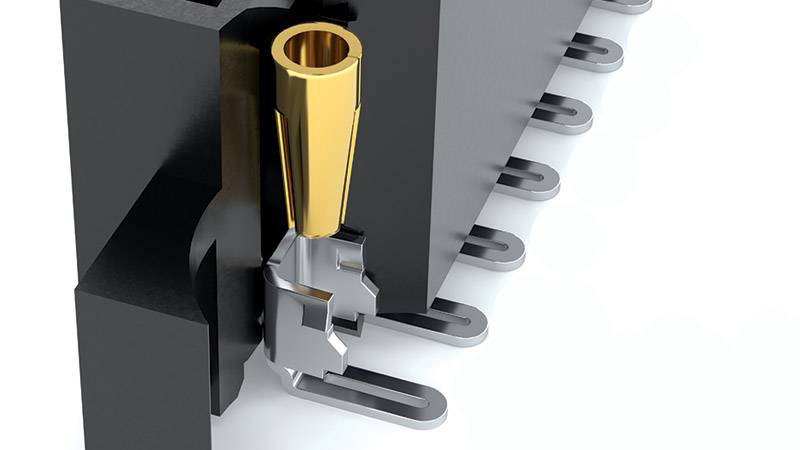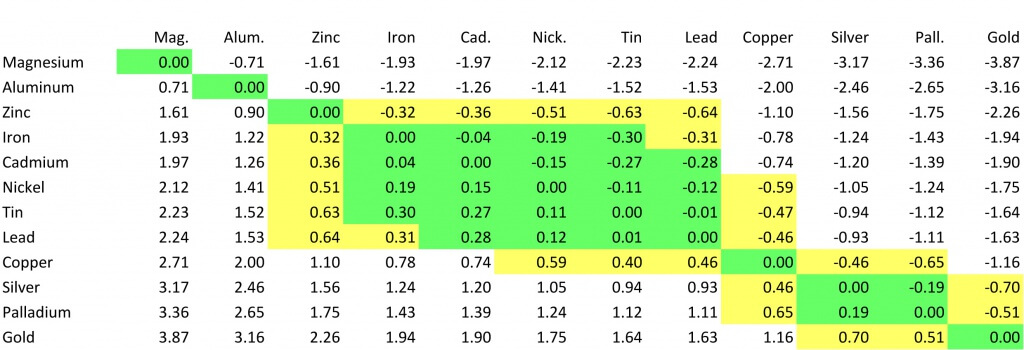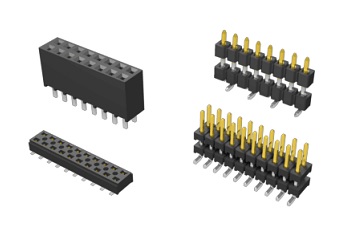Connector Plating FAQs: Practical Advice
Connector Plating: Practical Advice About What Works and What Doesn’t
Author: Danny Boesing @Samtec
 Like most electronic components, the quality of countless subcomponents and processes directly affects the quality and performance of the finished product. With PCB-level connectors, those factors include pin material, type of plastic, the quality of the molded plastic bodies, coplanarity of the tails, the quality of the surface finish (plating), choosing the correct connector plating, the manufacturing/assembly process (putting the pins in the plastic), and packaging, among others.
Like most electronic components, the quality of countless subcomponents and processes directly affects the quality and performance of the finished product. With PCB-level connectors, those factors include pin material, type of plastic, the quality of the molded plastic bodies, coplanarity of the tails, the quality of the surface finish (plating), choosing the correct connector plating, the manufacturing/assembly process (putting the pins in the plastic), and packaging, among others.
Connector Plating Is Mission Critical
Plating affects the life and quality of the terminal or socket (i.e., wear); it impacts corrosion resistance, conductivity, solderability, and of course, cost.
Danny Boesing to Mr. Phil Eckert, Samtec’s Quality Engineering Manager, about all things pertaining to connector plating. If he put all those things, well, it would be a painfully long blog. So he’s dividing it, each one covering about five connector plating questions that people like Phil and other Samtec Quality and Processing experts are frequently asked.
BTW, the goal here is not to write a textbook about connector plating, chemistry, or metallurgy. We want to provide brief, to-the-point answers to the most commonly asked plating questions.
Why use gold plating?
Gold is generally specified for high reliability, low voltage, or low current applications. Gold is used in high-cycle applications because it’s rugged and has excellent wear properties (here’s an example of a high-cycle connector). Our gold is alloyed with cobalt, which increases the hardness. We also recommend gold for hostile environments, because it will remain free of oxides which could cause an increase in contact resistance.
Gold is a noble metal, which means it doesn’t react much to its environment.
Also, sometimes gold is a “matter of necessity” in that as connectors are miniaturized, contacts are too small to generate much normal force. So, low normal forces guide the need for Au plating.
The disadvantages of gold are primarily cost, then porosity at thinner plating levels, and some nuances regarding solderability. Specifically, many customers solder these “successfully,” but they are not soldering to the Au, because the Au dissolves in the molten solder. They are soldering to the nickel under the Au. So, technically, it is correct to say Au has poor solderability.
Why use tin plating?
Tin is a lower-cost alternative than gold, and has excellent solderability. Unlike gold, tin is not a noble metal. Tin plating starts to oxidize the moment it’s exposed to air. So a tin-plated contact system requires greater normal forces and a longer contact wipe area to break through this oxide film. Check out the brief video below.
Tin is often preferred due to its relatively low cost in applications with few mating cycles having the appropriate amount of normal force. (BTW, the connector in the video above is the SSW series)
What is the most popular plating option?
Selective gold-tin plating is Samtec’s most popular plating option because it provides designers with the best of both worlds. The contact area, the critical area where the contact interfaces the terminal pin and the signal is transferred, has the reliability of gold. The tail, which is soldered to the board, has a lower cost and improved solderability of tin.
Can gold be soldered?
This is kind of a loaded question. Some people say you should not solder gold-plated components to a PCB. Others say yes, but be cautious! You should be cautious because gold plating dissolves in solder, there’s the risk of solder bath contamination, and gold embrittlement.
Regarding embrittlement, once the gold weight contribution to the solder joint is 3% or 5%, embrittlement is a concern. Regarding gold dissolving in solder, and as explained above, solder paste is not soldering to the gold plate. The gold plate dissolves into the molten solder and the soldering takes place with the nickel underplate.
Can I mate gold and tin-plated connectors? Tell me about galvanic corrosion.
When choosing connectors for your application, it is important to choose mating connectors with similar plating materials in the contact areas. Dissimilar metals in the contact areas can result in galvanic corrosion. Galvanic corrosion typically occurs with metals of differing electronegativities.
Below is a chart that shows how different plating materials react to one another with regard to their galvanic potential. According to this chart, the galvanic potential of gold and tin is high.

The products in our Webshop


